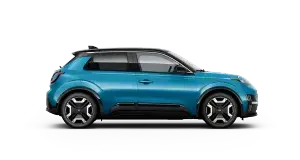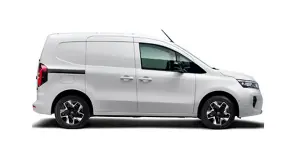TYPE 2
|
CHADEMO
|
CSS
|
|
|---|---|---|---|
| ARIYA | ✓ | X | ✓ |
| LEAF | ✓ | ✓ | X |
| Townstar EV | ✓ | X | ✓ |
KW Vs KWH
Charging power for electric cars is measured in kilowatt (kW) and the capacity of your battery is measured in kilowatt-hour (kWh).
So, for example, the Nissan LEAF has a 39kWh battery. To fully charge it with a 7kW AC charger it takes around 7½ hours considering the charger specifications, together with the vehicle on-board charger use of Battery Boost or Power Management.1
TETHERED VS UNTETHERED
Essentially, tethered home chargers have a fixed cable attached that can't be removed from the charger. Untethered chargers have a detachable cable that can be taken out of the charger and stored in the car or at home.
All new Nissan electric vehicles come with a detachable cable to ensure that you can charge on the go, but most customers choose a tethered home charger so that they do not have to detach it and pack it away when they are not charging at home.
TYPES OF CURRENT
There are two types of electric current. AC which stands for alternating current and DC which stands for direct current. The power that comes from the grid is always AC. However, batteries like the one in your electric vehicle can only store power as DC. That's why most electronic devices have a converter built into the plug, which turns AC into DC.
When it comes to electric vehicles, the converter is built inside the vehicle and it converts power from AC to DC as it feeds it into the car’s battery. This is the most common charging method for electric vehicles today and most chargers use AC power.
There are DC chargers which have the converter inside the charger itself. That means it can feed power directly to the car's battery and doesn't need the onboard charger to convert it. DC chargers are typically larger and faster, and the majority of public charging points are DC.
LET'S EXPLORE CHARGERS AND CONNECTORS
TYPE 2
|
CHADEMO
|
CSS
|
|
|---|---|---|---|
| ARIYA | ✓ | X | ✓ |
| LEAF | ✓ | ✓ | X |
| Townstar EV | ✓ | X | ✓ |
TYPE 2
|
CHADEMO
|
CSS
|
|
|---|---|---|---|
| ARIYA | ✓ | X | ✓ |
| LEAF | ✓ | ✓ | X |
| Townstar EV | ✓ | X | ✓ |
EV FAQ
All your questions answered
What type of chargers are available for Electric vehicles?
How do I find nearby EV chargers?
How do I get an electric charging point at home?
How long is the warranty on the battery?
Do Electric vehicles have gears?
What is a kilowatt (kW)?
What is a kilowatt hour (kWh)?
Can you drive long distances in an electric vehicle?
What's the difference between AC and DC charging?
Take The Next Steps
1 Charging time may vary depending on charging conditions, including charger type and condition, on-site power usage, battery temperature as well as ambient temperature at point of use, battery age and state of charge, and if battery safeguarding technology is activated.














